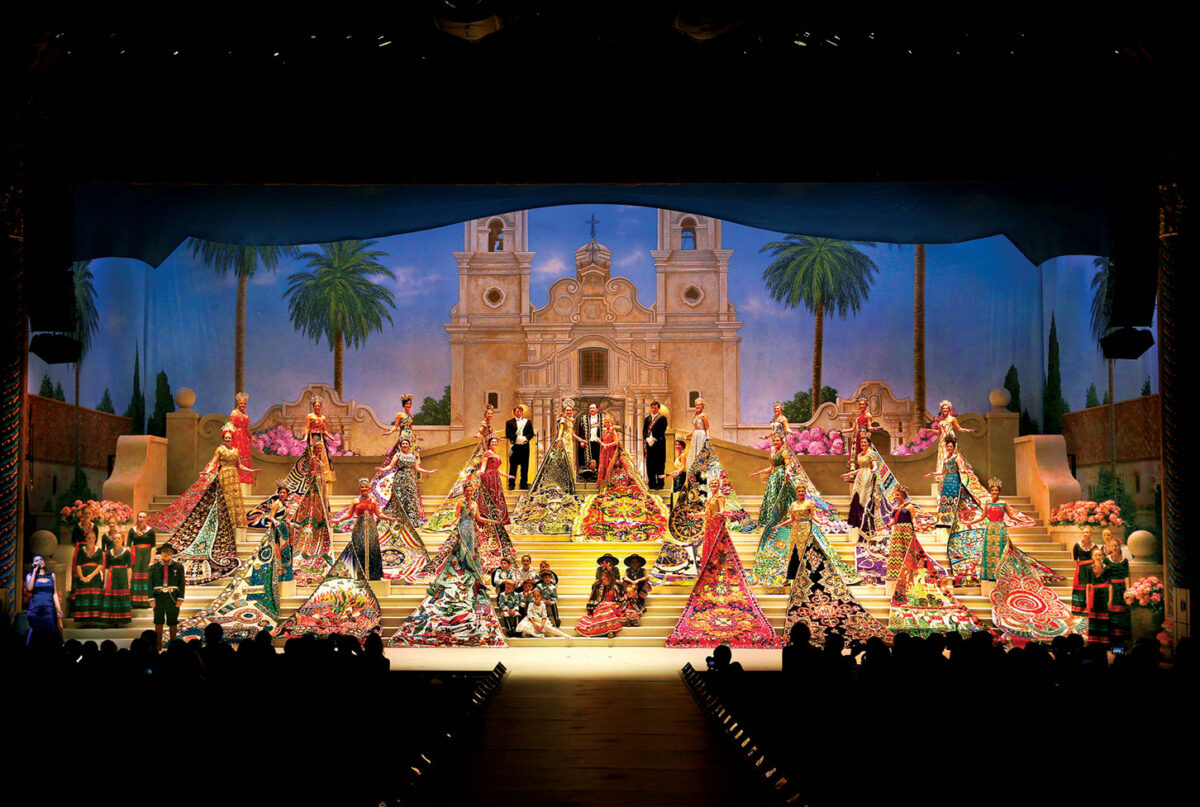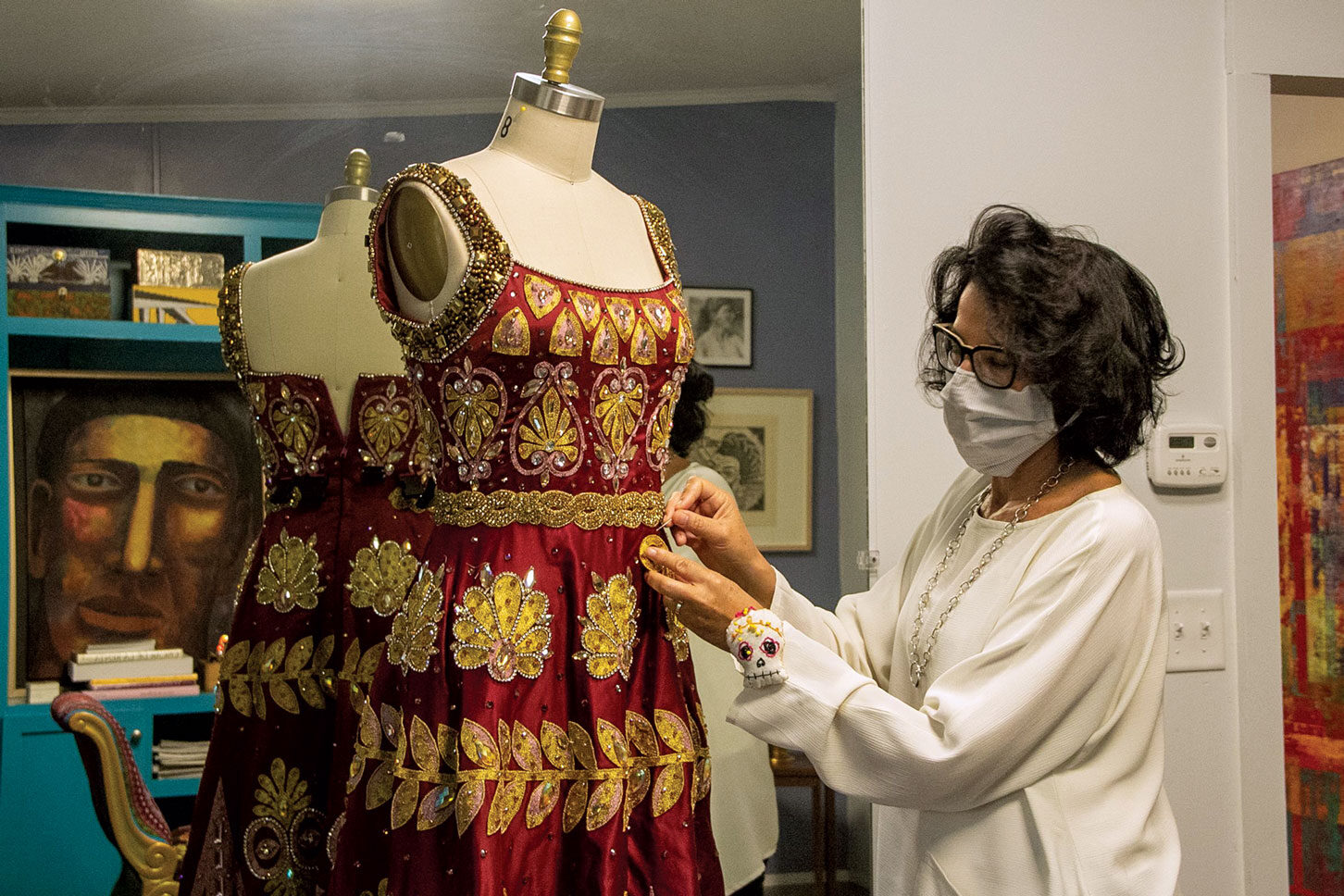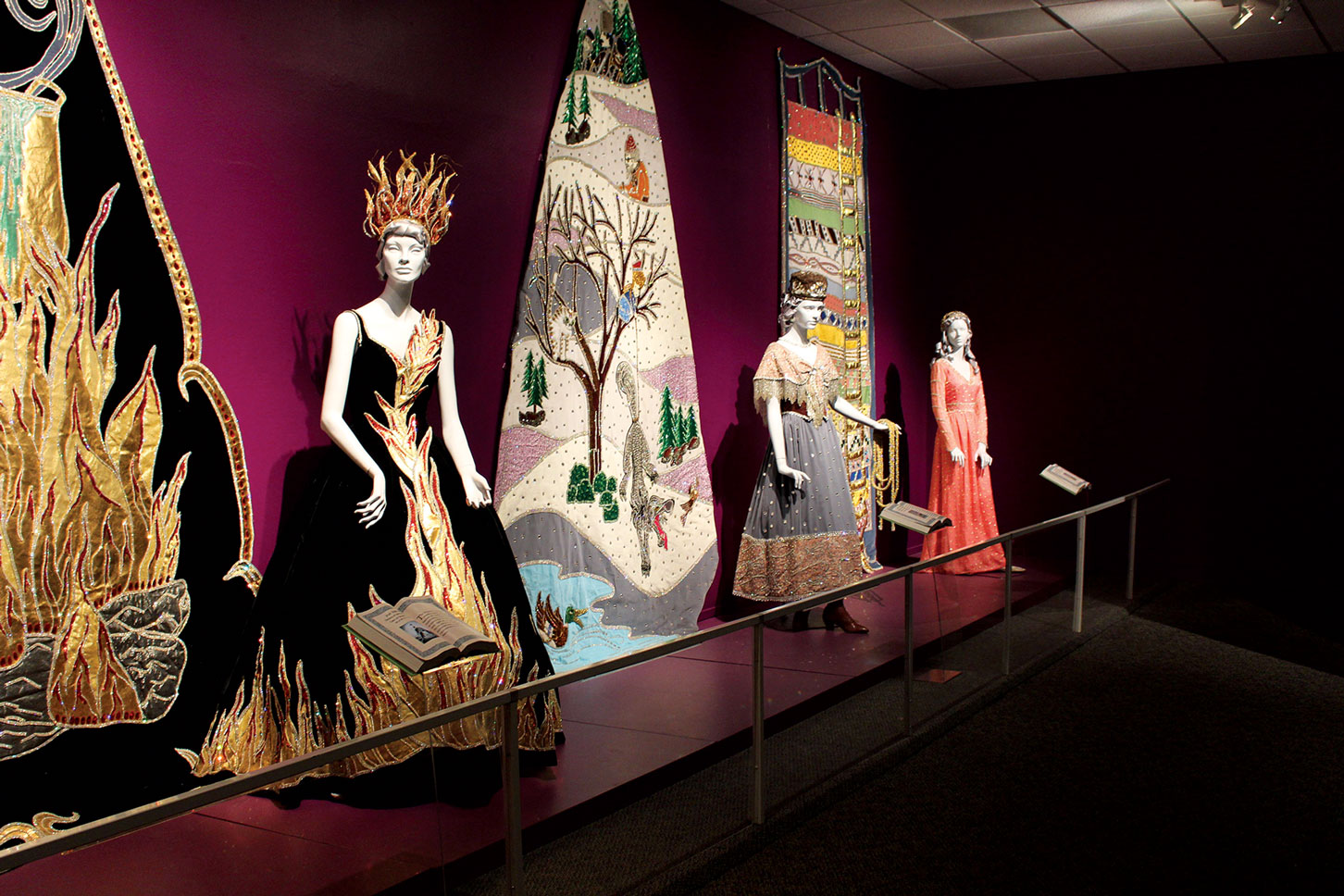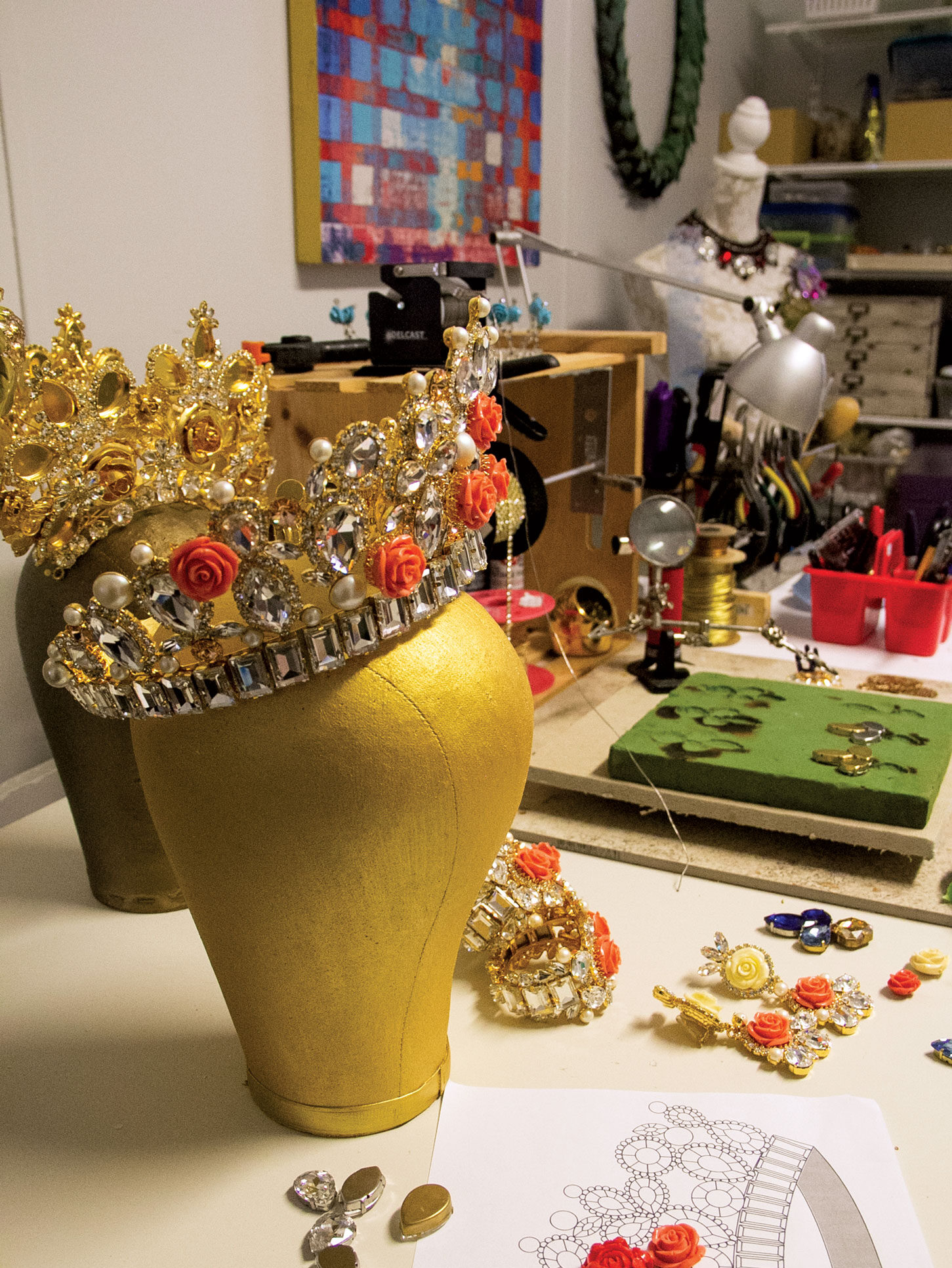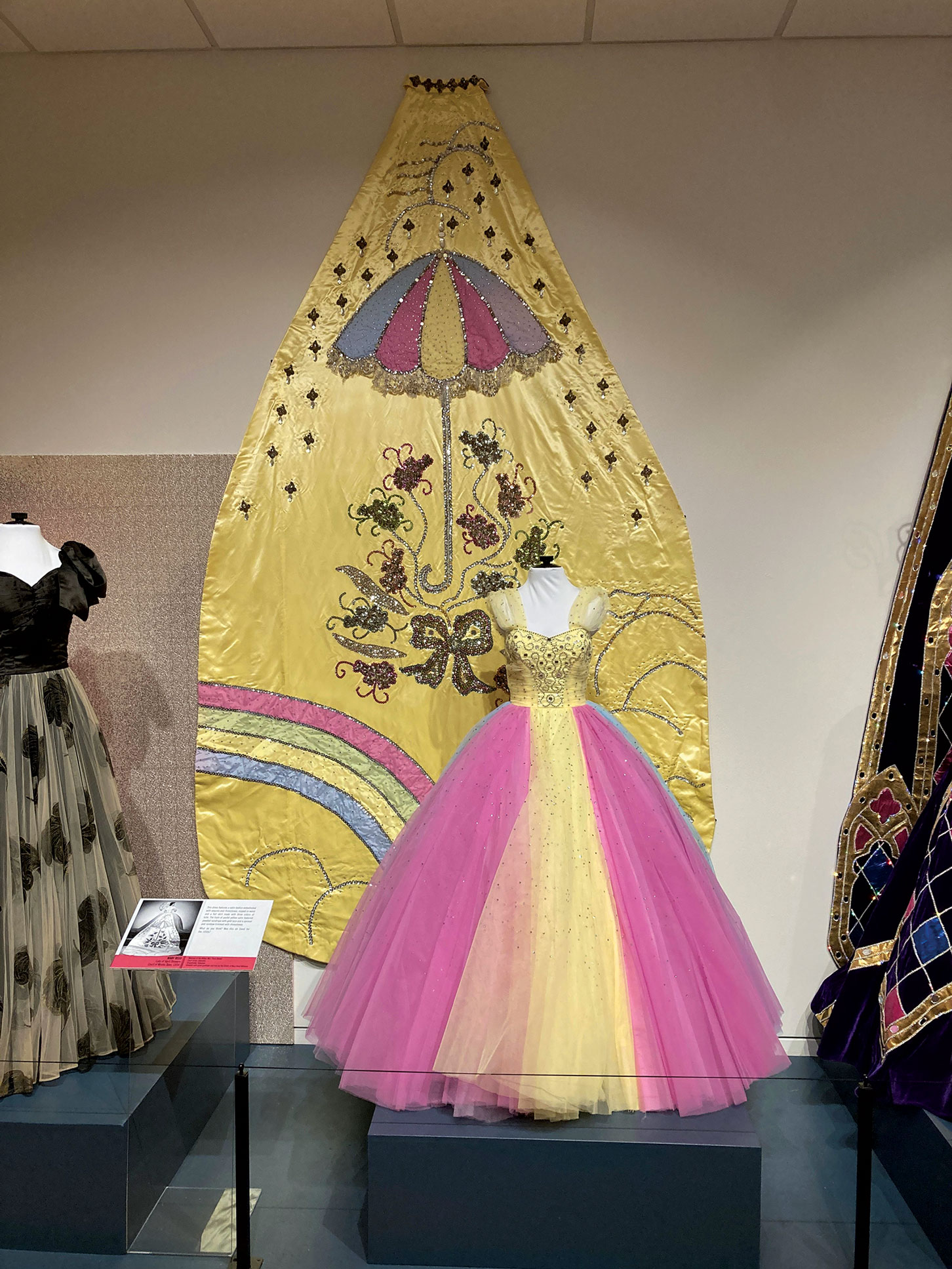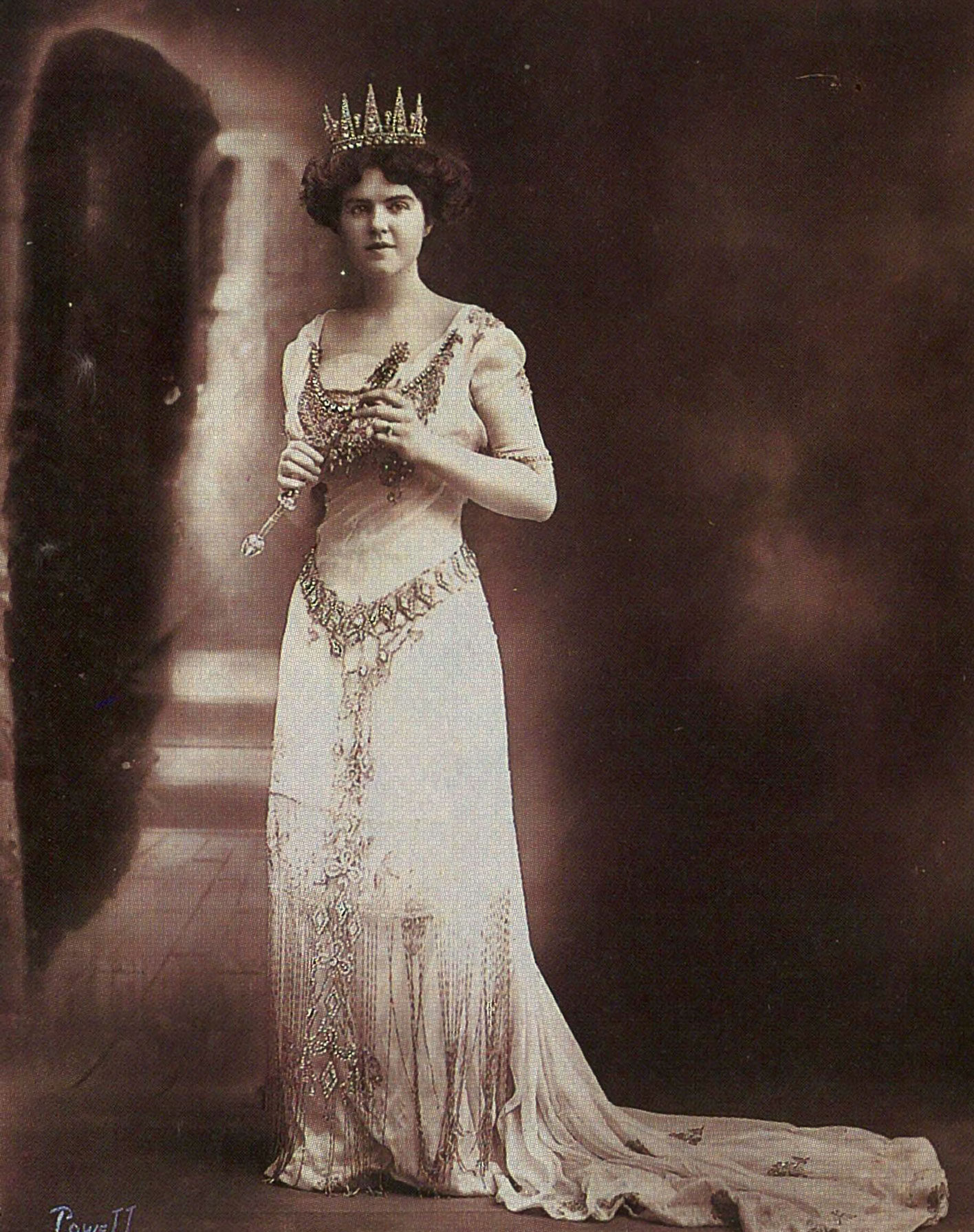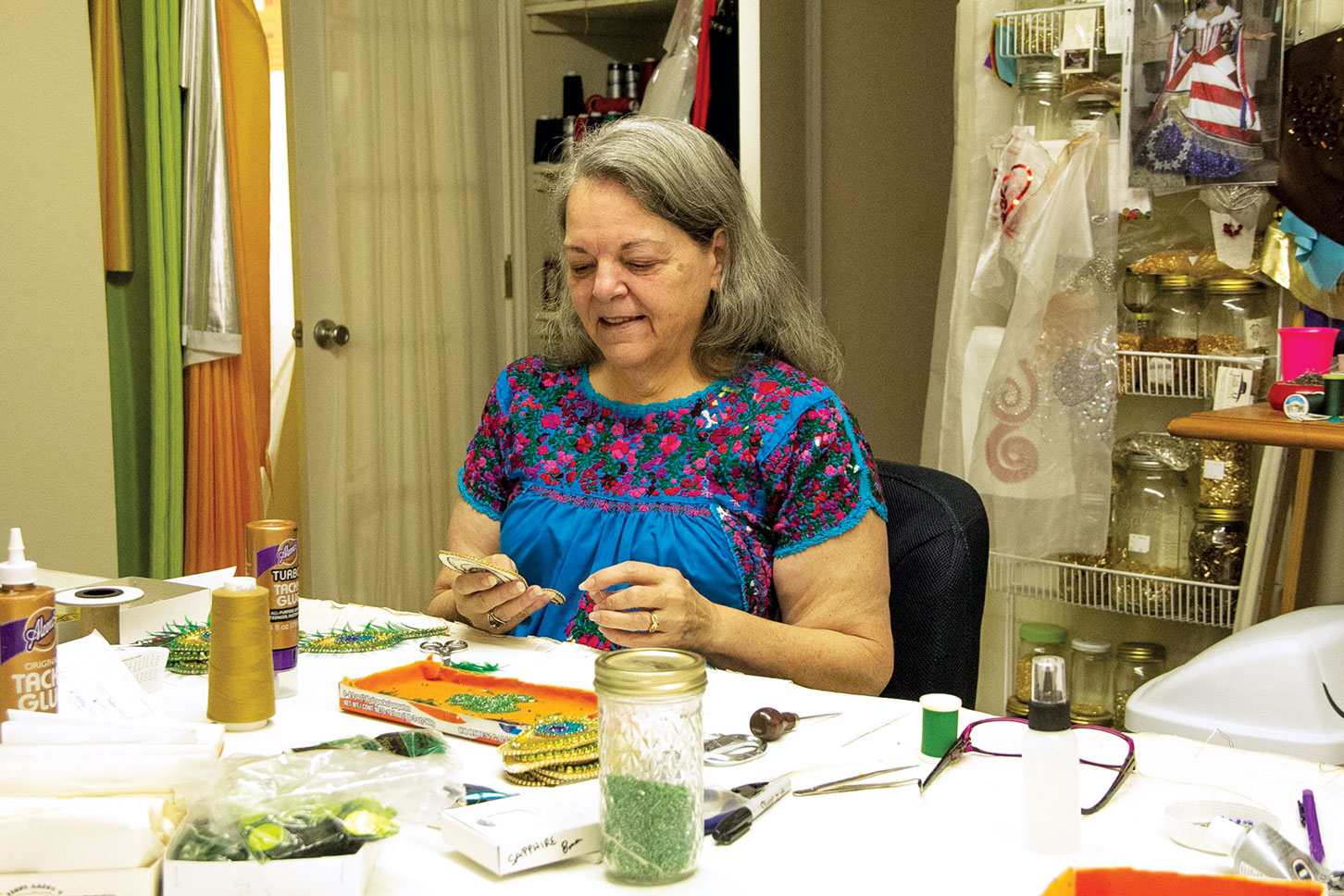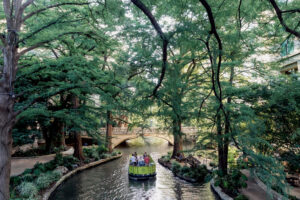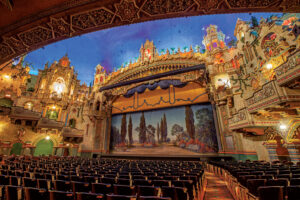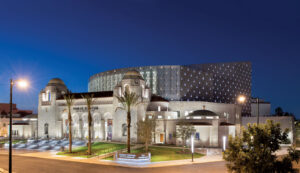Above: 2017 Coronation of the Queen of the Order of the Alamo with her full court. 2017. Photo by Gary Stanko.
Fiesta® San Antonio is full of fanfare, flash and funky fun. With hundreds of events, from high-falutin’ formal affairs to piñata-busting bashes, there's a party or parade for everyone. Everywhere, one of the most popular pastimes is people-watching, and Fiesta is prime time for fashion fans. Alamo City folks love to dress for the occasion, and Fiesta features more than a hundred different occasions to flaunt your personal style, from sequined glam to charro chic to flip-flops and muffin tops.
But the most dazzling pageantry is on display at the annual Coronation of the Queen of the Order of the Alamo. Part highly choreographed spectacle worthy of Europe’s 18th-century courts, part glittering presentation of the daughters of well-connected families, it’s the glitziest show in town. For one night in Fiesta, the Majestic Theatre hosts the lavish spectacle, complete with Queen, Princess, Duchesses, Prime Minister, escorts, pages and attendants and a Lord High Chamberlain, almost all from the families of the Order members.
Almost every year since 1909, the members of the Order of the Alamo, a prominent but very private fraternal group about 1,000 strong, have chosen a Queen to symbolically rule over Fiesta. Their stated mission was to be “… a patriotic group of men who wished to enlarge Fiesta’s annual celebration of the heroic struggle for Texas independence … by electing a Queen to reign over San Antonio’s Fiesta celebrations every year, and to provide for her Coronation with pomp and ceremony.” A century later, there are more Fiesta monarchs around than you can shake a turkey drumstick at: King Antonio, Rey Feo, Miss Fiesta San Antonio, Fiesta Teen Queen, Charro Queen, Queen of Soul, La Reina de la Feria de las Flores and dozens of other minor royals rule in their own rights. Fiesta, after all, is a festival of and for the people — a time when commoners can be kings and queens, and outfits from royal to ridiculous are de rigueur.
But the Order of the Alamo’s Coronation remains the most spectacular of all — a memorable marvel of pomp and circumstance, replete with royal rituals and glorious staging. To the members of the Order, in their gold-embroidered purple sashes, it’s a hallowed tradition. To the young royals of its fantasy courts, the Coronation is their debut — the culmination of a weeks-long whirl of parties and other social events. But to unconnected onlookers who take in the Coronation at the Majestic, or ooh and aah at the crowned young women trailing their glittering trains on the floats in the Battle of Flowers Parade the following Saturday, it’s all about the outfits.
And oh, what outfits! Opulent, glimmering, bedazzled to the hilt, each gown features a train as long as 18 feet (depending on the status of the royal — the Queen’s is the longest). Each train tells its own story, custom-designed to express an aspect of the overall theme of the year’s royal court. They are masterpieces of gold thread, sumptuous fabric, beads, sequins, rhinestones and iridescent crystal jewels that sparkle in the light. They are worn only a few times, most publicly at the Coronation and again on floats in the Battle of Flowers Parade a few days later.
The journey from choosing a concept for any year’s court can take more than a year, starting with a Mistress of the Robes chosen by the Order — almost always from one of the long-time Order of the Alamo families that have had their time in the Coronation spotlight. Choosing the Court theme is just the beginning. For many years, there was always a Court Designer — an artist who would do multiple sketches for the royal robes, the other costumes and the stage set itself. Recently, the Mistress of the Robes often takes that job on, too. After the Queen and her court are chosen by the Order, the real work of creating the dresses begins.
A handful of dressmakers on the Order of the Alamo’s approved list spend months selecting fabric and decoration, making slight design changes, holding meetings with all involved, doing fittings, sewing and embellishing. As with any couture garment, most work is done by hand. An incredible amount of work goes into these glittering garments.
“The dressmakers all have extensive training and skills in different methods: fitting, construction, beading, embroidery, even metalworking,” said Leslie Meyer Ochoa, the Witte Museum’s Vice President of Collections.
The designers and their hand-picked teams often make two or three Coronation dresses a year, in addition to other work. Some create elaborate gowns for other pageants, such as Tyler’s Rose Festival, Laredo’s George Washington celebration, or events around the country. Others, like veteran Coronation designer Veronica Prida, have flourishing design studios.
Like membership in the Order of the Alamo, work on the Coronation dresses is sometimes passed through generations. “It’s a tradition in many of these families, and we support a whole cottage industry of dressmakers in San Antonio,” Order stalwart Bart Simpson once commented. (Involvement in a Queen’s court is also a tradition among many of the city’s prosperous old families. As with real-life monarchies, bloodlines count.)
Accessories are another vital part of the work on each royal costume, and beautiful matching jewelry is another key to the look. Chris Crouch, who moved his main MOANS Couture studio from New York to San Antonio, has created memorable pieces for many different Fiesta monarchs. While some Fiesta royals donate or mothball their royal robes post-Fiesta, Crouch said it’s more common to hang on to the royal accessories — crowns and necklaces are less bulky to store — and sometimes fun to wear.
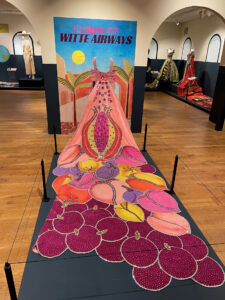
the Witte Museum 2023 Fiesta: A World of Inspiration exhibition.
Back in 1909, when the first Queen of the Order of the Alamo was crowned, life was simpler. The themes were simpler — roses, lilies and fairies. Girls could choose their colors for the dresses, and families or their regular seamstresses often sewed their own fanciful costumes.
“The designs and the methods of implementing the designs have changed dramatically over the years,” said the Witte’s Ochoa. Today the Witte has about 270 Coronation gowns, from the early days to the present. A few years back, the collection grew so large that the museum stopped accepting dresses. But with expansion and new spaces, Ochoa said the plan is to have a few representative gowns from every Order of the Alamo Fiesta court. Other royals, such as Rey Feo or Fiesta Teen Queen, are included in the collection, but by far the largest number are donations from the Order families.
After all, what’s a gal to do with a couture gown with a 16-foot royal train after her Fiesta reign ends? Ochoa says she’s heard of the trains being hung on walls or balconies, draped over pianos and even used as Christmas tree skirts. But many simply end up in storage.
More of the collection will be on display at the Witte in the future. Ochoa says there are plans to have “visible storage” for the gowns in the museum’s B. Naylor Morton Research and Collections Center. She designed custom storage boxes for the royal robes — a box for the dress and a box for the accompanying train. The boxes vary, she said, depending on the weight. Some trains tip the scale at 75 pounds or more, and some royals have resorted to furniture slides or ball bearings to move their trains.
Want an up-close look at these fabulous gowns? You can see some highlights of the Coronation collection at
“Fiesta Looks to the Skies,” an exhibit on display at the Witte through early fall. “This is the Witte’s Year of Space,” Ochoa said. “It will be quite a lot of fun looking at our historic collection and seeing when the Order of the Alamo has been inspired by the sky.”

